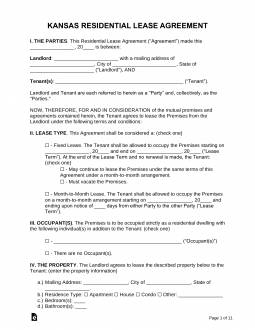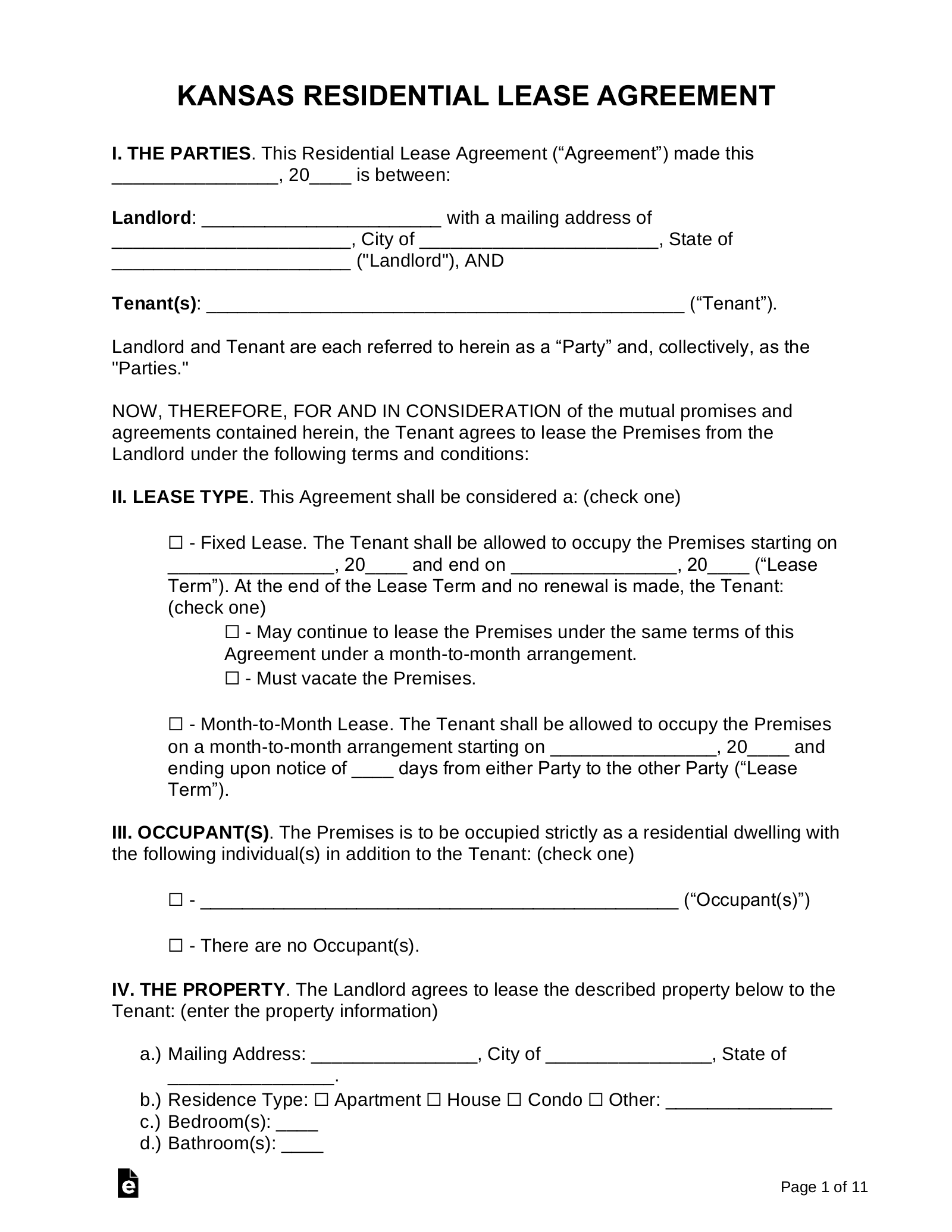Updated November 21, 2023
A Kansas lease agreement is a legal document that binds a landlord and tenant over the use of a property for residential or commercial use. The agreement will usually have a beginning and end date with the terms for how much the tenant is to pay on a monthly basis to the landlord. After the document has been signed by all parties, they both will be legally bound to perform and cannot terminate the agreement without consent from one another.
Table of Contents |
Agreement Types (7)
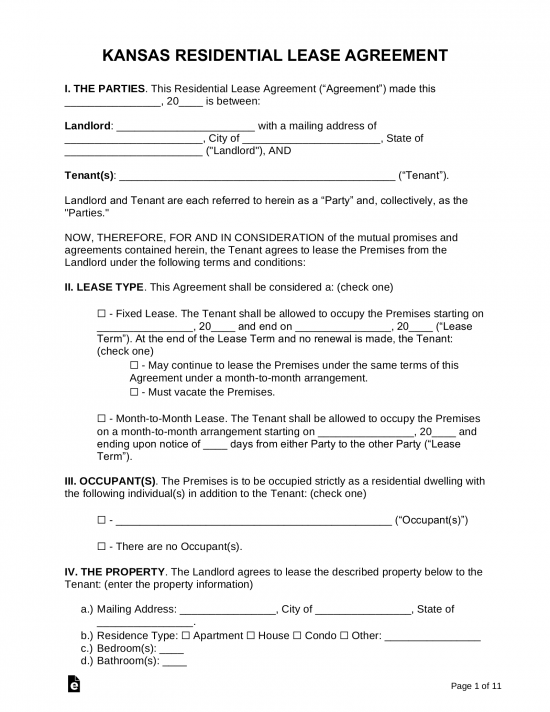 Standard Residential Lease Agreement – Common 12-month arrangement. Standard Residential Lease Agreement – Common 12-month arrangement.
Download: PDF, MS Word, OpenDocument |
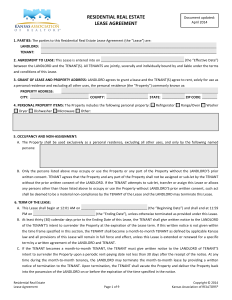 Association of Realtors Agreement – Provided by the Kansas Association of Realtors for standard residential tenancies. Association of Realtors Agreement – Provided by the Kansas Association of Realtors for standard residential tenancies.
Download: PDF |
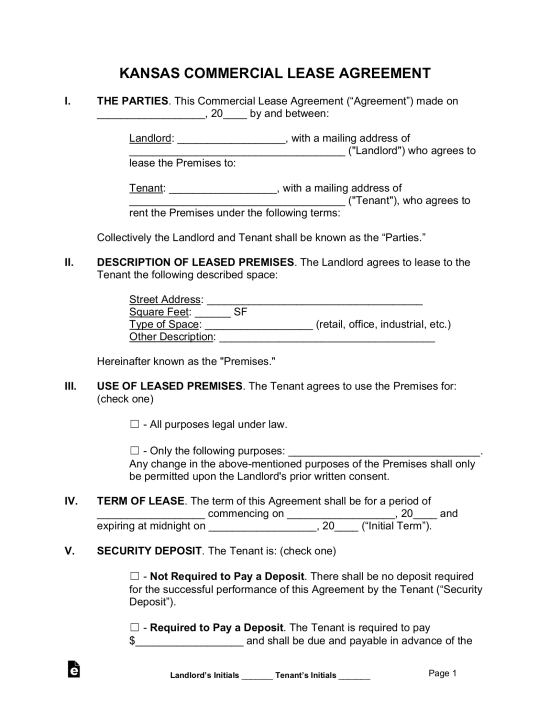 Commercial Lease Agreement – Primarily for business-oriented uses such as office, retail, and industrial spaces. Commercial Lease Agreement – Primarily for business-oriented uses such as office, retail, and industrial spaces.
Download: PDF, MS Word, OpenDocument |
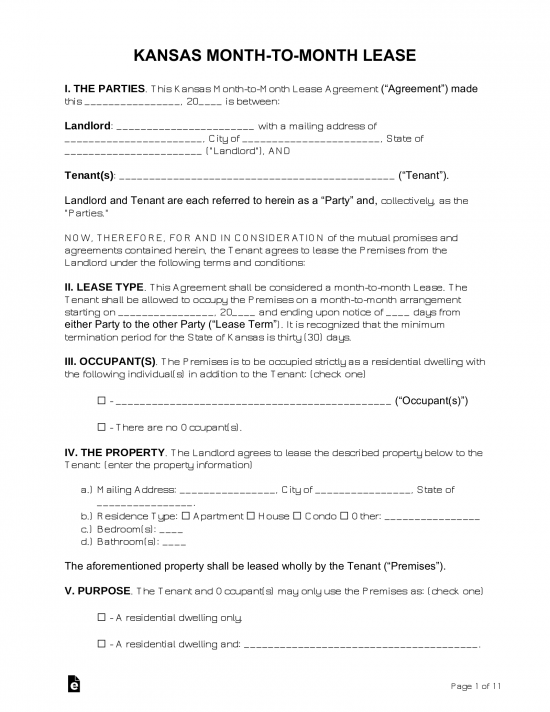 Month-to-Month Lease Agreement (§ 58-2570) – Tenancy at will that allows the landlord or tenant to terminate the contract with at least 30 days’ notice from the next payment period. Month-to-Month Lease Agreement (§ 58-2570) – Tenancy at will that allows the landlord or tenant to terminate the contract with at least 30 days’ notice from the next payment period.
Download: PDF, MS Word, OpenDocument |
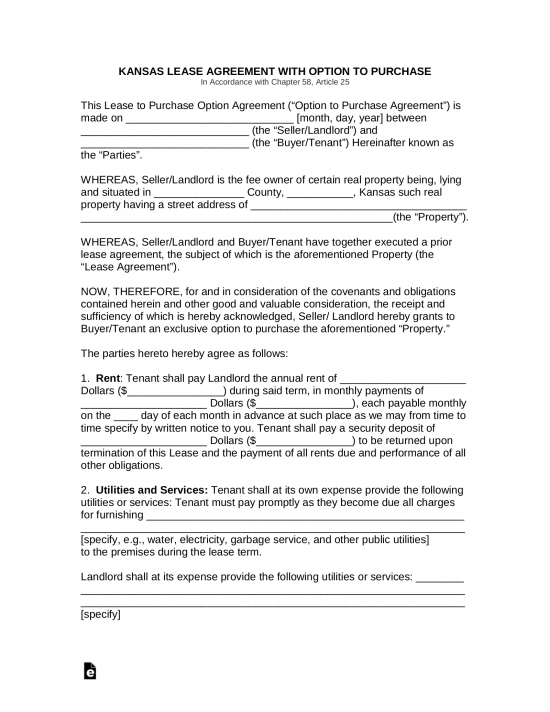 Rent-to-Own Lease Agreement – For the purpose of having a residential landlord-tenant arrangement with the option of having the right to buy the property within certain guidelines. Rent-to-Own Lease Agreement – For the purpose of having a residential landlord-tenant arrangement with the option of having the right to buy the property within certain guidelines.
Download: PDF, MS Word, OpenDocument |
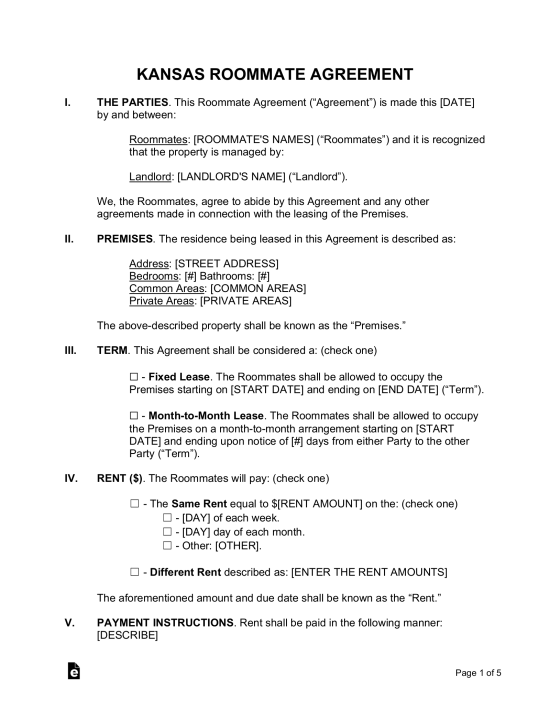 Room Rental (Roommate) Agreement – A contract between the members of a household to organize cleaning, payment of bills, and any other rules or items to be established amongst the roommates. Room Rental (Roommate) Agreement – A contract between the members of a household to organize cleaning, payment of bills, and any other rules or items to be established amongst the roommates.
Download: PDF, MS Word, OpenDocument |
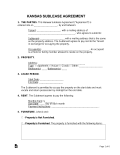 Sublease Agreement – To perform the act of subletting by which a tenant allows another person, the subtenant, to take over their space. Sublease Agreement – To perform the act of subletting by which a tenant allows another person, the subtenant, to take over their space.
Download: PDF, MS Word, OpenDocument |
Required Disclosures (3)
- Authorized Persons – Any authorized individuals and an address for notices to the landlord must be listed in the agreement and, if changed, must be updated.[1]
- Lead-Based Paint Disclosure – Federal law requires any structure built prior to 1978 to be acknowledged by any new tenant through the disclosure form by their initials and signing on the bottom of the document.
- Inventory and Condition of the Premises – Within the first five days of the tenancy, the landlord and tenant must jointly conduct a walkthrough of the premises and itemize every pre-existing repair and blemish on the property.[2]
Security Deposits
Maximum Amount – A landlord may charge as much as one month’s rent for the security deposit if the property is unfurnished, and one and a half months’ rent if it is furnished.[3]
Collecting Interest – Kansas state law does not require landlords to collect or pay interest on security deposits.
Pet Deposit – A landlord may request an additional half of one month’s rent if the tenant has a pet.[3] However, a landlord may not require a pet deposit from a tenant if the pet is considered a service animal under the Americans with Disabilities Act (ADA).[4]
Returning – The landlord must return the deposit within 30 days of the date of lease termination.[5]
- Itemized List – If the landlord wants to apply any portion of the security deposit to the costs of damages caused by the tenant, they must provide an itemized list of damages to the tenant within 14 days of the date of lease termination.[5]
When is Rent Due?
Grace Period – Kansas state law does not set forth a grace period or legal option for the tenant to extend their rent payment date. If the tenant does not pay rent, the landlord can send a three-day or 10-day notice to quit (depending on the length of the tenancy).
Maximum Late Fee – No maximum. There are no statutory limits on how much the landlord can charge for late fees when rent is late.
NSF Fee – $30 is the maximum fee for a bounced check.[6]
Withholding Rent – There is no Kansas state law permitting a tenant to withhold rent.
Right to Enter (Landlord)
Standard Access – The landlord has the right to enter the property during reasonable hours and with reasonable notice to the tenant.[7]
Immediate Access – The landlord may enter the property without the consent of the tenant during an emergency involving the potential loss of life or damage to the property.[8]
Abandonment
Absence – If the tenant is 10 days in default for nonpayment of rent and has removed a substantial portion of their belongings from the rental property, the landlord may assume that the property has been abandoned.[9] The landlord must make reasonable efforts to rent the abandoned property at a fair rental.[10]
Breaking the Lease – If the tenant terminates the rental agreement, the landlord may file an action for rent and may also have a separate claim for actual damages for breach of the agreement.[11]
Tenant’s Utility Shutoff – If the tenant fails to comply with their duties in a way that materially affects health and safety, the landlord may give written notice that the lease will terminate in 30 days. If the tenant remedies the situation within 14 days, the lease will not terminate.[12]
Unclaimed Property – If the tenant abandons the rental unit and leaves personal property behind, the landlord may store it at tenant’s expense and dispose of it after 30 days, provided the landlord has published a written notice in a newspaper in the same county and has mailed a copy of the published notice to the tenant’s last known address.[13]

